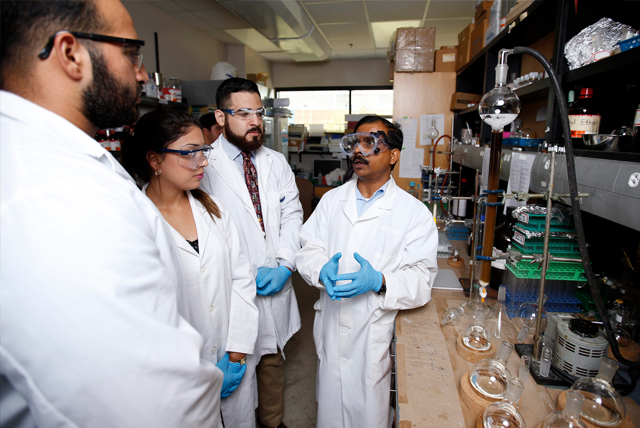Document Type
Article
Publication Date
2-6-2019
Abstract
Crystal structure has a strong influence on the luminescence properties of lanthanide-doped materials. In this work, we have investigated the thermally induced structural transition in Gd 2 Hf 2 O 7 (GHO) using Eu 3+ ions as the spectroscopic probe. It was found that complete phase transition from the disordered fluorite phase (DFP) to the ordered pyrochlore phase (OPP) can be achieved in GHO with the increase of annealing temperature from 650 ? 1100 ? 1300 °C. OPP is the more stable structural form for the GHOE nanoparticles (NPs) annealed at a higher temperature based on the energy calculation by density functional theory (DFT). The asymmetry ratio of the GHOE-650 NPs was the highest, whereas the quantum yield, luminescence intensity, and lifetime values of the GHOE-1300 NPs were the highest. Emission intensity of Eu 3+ ions increases significantly with the phase transition from the DFP to OPP phase and is attributed to the higher radiative transition rate (281 s -1 ) of the 5 D 0 level of the Eu 3+ ion in the environment with relatively lower symmetry (C 2v ) because of the increase of crystal size. As the structure changes from DFP to OPP, radioluminescence showed tunable color change from red to orange. The Eu 3+ local structure obtained from DFT calculation confirmed the absence of inversion symmetry in the DFP structure, which is consistent with the experimental emission spectra and Stark components. We also elucidated the host to dopant optical energy transfer through density of states calculations. Overall, our current studies present important observations for the GHOE NPs: (i) thermally induced order-disorder phase transition, (ii) change of point group symmetry around Eu 3+ ions in the two phases, (iii) high thermal stability, and (iv) tunability of radioluminescent color. This work provides fundamental understanding of the relationship between the crystal structure and photophysical properties of lanthanide-doped materials and helps design a strategy for advanced optoelectronic materials.
Recommended Citation
Gupta, S. K., Abdou, M., Ghosh, P. S., Zuniga, J. P., & Mao, Y. (2019). Thermally Induced Disorder–Order Phase Transition of Gd2Hf2O7:Eu3+ Nanoparticles and Its Implication on Photo- and Radioluminescence. ACS Omega, 4(2), 2779–2791. https://doi.org/10.1021/acsomega.8b03458
First Page
2779
Last Page
2791
Publication Title
ACS Omega
DOI
10.1021/acsomega.8b03458



Comments
© 2019 American Chemical Society. Original published version available at http://doi.org/10.1021/acsomega.8b03458.